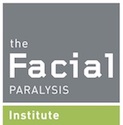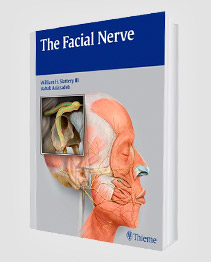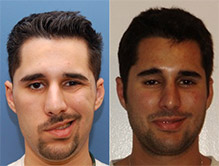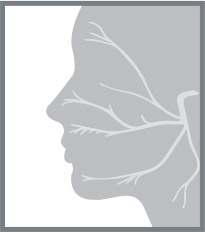
Bell’s palsy is a leading cause of facial paralysis in the United States. Its exact cause is unknown, and the condition can cause symptoms that range in terms of severity. Fortunately, the symptoms of Bell’s palsy typically disappear on their own. And, in these instances, patients do not experience any long-lasting side effects.
Dr. Babak Azizzadeh of The Facial Paralysis Institute is a globally recognized facial plastic and reconstructive surgeon. He possesses comprehensive expertise in the diagnosis and treatment of Bell’s palsy and other forms of facial paralysis.
How to Diagnose Bell’s Palsy
There is no one-size-fits-all test to diagnose Bell’s palsy. Rather, several tests can be used to evaluate a patient’s facial paralysis symptoms.
Common Bell’s palsy symptoms include:
- Facial drooping
- Inability to smile, frown, or produce other facial expressions
- Drooling
- Jaw pain
- Pain around the ear on the paralyzed side of the face
- Headache
- Loss of taste
- Sensitivity to sound
For people dealing with any of the aforementioned symptoms, meet with a doctor. At this time, the doctor can perform any of the following tests to diagnose Bell’s palsy:
1. Ear, Nose, and Throat (ENT) Test
An ENT test can provide insights into whether an inner ear infection and/or head or neck tumor is causing facial paralysis symptoms. In some instances, the test can be used to assess dizziness associated with Bell’s palsy.
2. Neurologic Assessment
With a neurologic assessment, a patient’s movement, reflexes, cranial nerves, and level of consciousness are evaluated.
3. Hearing Test
Patients can undergo a hearing test to find out if Bell’s palsy has damaged their hearing or caused inner ear problems.
4. Vestibular Test
Bell’s palsy can impact nerve balance. As such, a vestibular test can be used to evaluate this balance and find out if it is intact.
5. Tearing Test
There may be times when Bell’s palsy impacts a patient’s ability to open and close the eye. At this point, a tearing test can be used to assess the patient’s tearing function.
6. Imaging Scans
Magnetic resonance imaging (MRI) and/or computerized tomography (CT) scans can be used to identify a tumor, skull fracture, or other potential sources of pressure on the facial nerve.
7. Electromyography (EMG)
During an EMG, electrical activity of a facial muscle is measured in response to stimulation. An EMG can be used to verify facial nerve damage. If nerve damage is discovered, the test can also be used to determine its severity.
Dr. Azizzadeh can use one or more of the aforementioned tests as part of a Bell’s palsy diagnosis. If Dr. Azizzadeh conducts tests and believes his patient is coping with the condition, he tailors his treatment accordingly. Or, there may be cases in which Dr. Azizzadeh finds a patient’s symptoms are caused by another condition.
Is Facial Paralysis the Same Thing As Bell’s Palsy?
Bell’s palsy signs and symptoms can replicate those associated with many medical conditions, such as:
1. Facial Nerve Palsy
Like Bell’s palsy, facial nerve palsy is one of the top causes of facial paralysis in the United States. However, facial nerve palsy refers to the loss of movement on one side of the face. Meanwhile, Bell’s palsy can cause facial nerve swelling that contributes to facial paralysis symptoms.
2. Stroke
Research indicates Bell’s palsy affects the seventh cranial nerve, but the root cause of the condition remains under investigation. Comparatively, a stroke is a disease that impacts the brain’s arteries. For those who experience a stroke, a blood vessel in the brain gets blocked. When this happens, the vessel cannot transport oxygen and nutrients to the brain. This can lead to brain cell damage and death. If a stroke impacts the right side of the brain, it can cause paralysis on the opposite side of the face. This can also result in vision problems and memory loss.
3. Lyme Disease
Lyme disease is a disease that occurs due to a bite from a blacklegged tick infected with Borrelia burgdorferi or Borrelia mayonii bacteria. The tick bite can damage the facial nerve, leading to facial weakness. If left uncorrected, Lyme disease can escalate. The disease can reach a point where it causes paralysis on one or both sides of the face.
It is paramount to undergo appropriate testing if any Bell’s palsy signs and symptoms appear. From here, a patient can find out why these symptoms are occurring and how to treat them.
What Is the Best Bell’s Palsy Treatment?
In addition to understanding how to diagnose Bell’s palsy, it is beneficial to learn how the condition is treated.
The best treatment for Bell’s palsy varies. Initially, corticosteroids can be used to reduce swelling of the facial nerve. These tend to work best when used within the first few days of symptoms. Along with corticosteroids, antiviral drugs may be used with steroids to treat Bell’s palsy symptoms. On their own, antivirals have been shown to have no effect on Bell’s palsy patients. But, when used with steroids, antivirals may help Bell’s palsy patients.
Physical therapy can provide symptomatic relief for Bell’s palsy patients as well. The therapy involves the use of massaging and exercises to keep the facial muscles from shrinking and shortening.
Also, surgery can be used for Bell’s palsy. Dr. Azizzadeh customizes Bell’s palsy surgery to his patient, based on the severity of their facial paralysis and other factors. He may recommend selective neurolysis or a “supercharging” surgical procedure for Bell’s palsy.
Dr. Azizzadeh developed selective neurolysis to permanently treat Bell’s palsy symptoms. The procedure has been shown to improve the quality of lives of patients dealing with different forms of facial paralysis. It has also helped these patients regain the ability to naturally produce facial expressions.
Selective neurolysis is an outpatient procedure. During treatment, Dr. Azizzadeh uses an intraoperative EMG to map out his patient’s facial nerves. Dr. Azizzadeh then reduces the activity of nerves that otherwise hamper his patient’s smile mechanism. He also releases the platysma muscle that pulls the corner of his patient’s mouth down.
Dr. Azizzadeh can perform a “supercharging” or “signal upgrading procedure” that increases the power of the facial nerve. The procedure helps patients improve coordination between the facial muscles, ensuring they can work together effectively.
With a supercharging procedure, Dr. Azizzadeh works to strengthen his patient’s weak smile muscles. At the same time, he preserves the basic functionality of these muscles.
Can Botox Be Used to Treat Bell’s Palsy Symptoms?
Patients can receive Botox injections to relieve Bell’s palsy symptoms without going under the knife. The injections deliver temporary results that last approximately four months.
Botox injections can reduce unwanted facial muscle movements. The injections can be used in different portions of the face, with results that appear within a few days of treatment. They can also be combined with neuromuscular retraining performed by a physical therapist, which teaches patients exercises they can use to regain the ability to properly move the facial muscles.
Dr. Azizzadeh offers Bell’s palsy treatments to patients who have been experiencing symptoms for eight months or longer. He encourages patients to reach out for a consultation. This allows Dr. Azizzadeh to evaluate a patient’s symptoms and determine how to ensure they won’t cause permanent facial paralysis.
Can Bell’s Palsy Cause Permanent Facial Paralysis?
Bell’s palsy is generally not considered a permanent problem. Most patients experience Bell’s palsy symptoms that disappear within two weeks and six months of onset. Rarely, there are instances in which the condition’s symptoms linger for an extended period of time.
Understanding how to diagnose Bell’s palsy is key. Those who identify signs and symptoms of the condition can address these issues in their early stages. If facial paralysis persists for eight months or longer, Dr. Azizzadeh can provide assistance, too.
Is Bell’s Palsy Preventable?
Bell’s palsy cannot be prevented. To date, the condition has been linked to several medical conditions, including:
- Diabetes
- High blood pressure
- Lyme disease
- Guillain-Barré syndrome
- Sarcoidosis
- Viral infection
- Multiple sclerosis
Bell’s palsy can affect people of all ages. It tends to be less prominent before the age of 15 and after the age of 60. It also has been shown to affect men and women at men and women at equal rates.
What to Do If You Experience Bell’s Palsy Symptoms
Bell’s palsy symptoms won’t necessarily clear up on their own. So, if these symptoms appear, seek out medical treatment right away. This ensures a patient can meet with a doctor, undergo testing, and begin treatment.
For patients who experience long-lasting Bell’s palsy symptoms and previously explored treatment options, additional help may be required. By partnering with Dr. Azizzadeh, a patient can receive a full evaluation and comprehensive care.
Dr. Azizzadeh is a Harvard-trained facial plastic and reconstructive surgeon with many years of industry experience. He takes Bell’s palsy treatment seriously. Therefore, Dr. Azizzadeh does everything in his power to ensure his patients receive a proper diagnosis and treatment. He works diligently to help his patients achieve long-term symptomatic relief.
Schedule a Bell’s Palsy Treatment Consultation with Dr. Azizzadeh
Dr. Azizzadeh is available to meet with patients to discuss Bell’s palsy treatment. To learn more or request a consultation, please contact us online or call us today at (310) 657-2203.
Request your consultation with Dr. Azizzadeh today
Call us at (310) 657-2203 to schedule an appointment.
Schedule a Consultation




